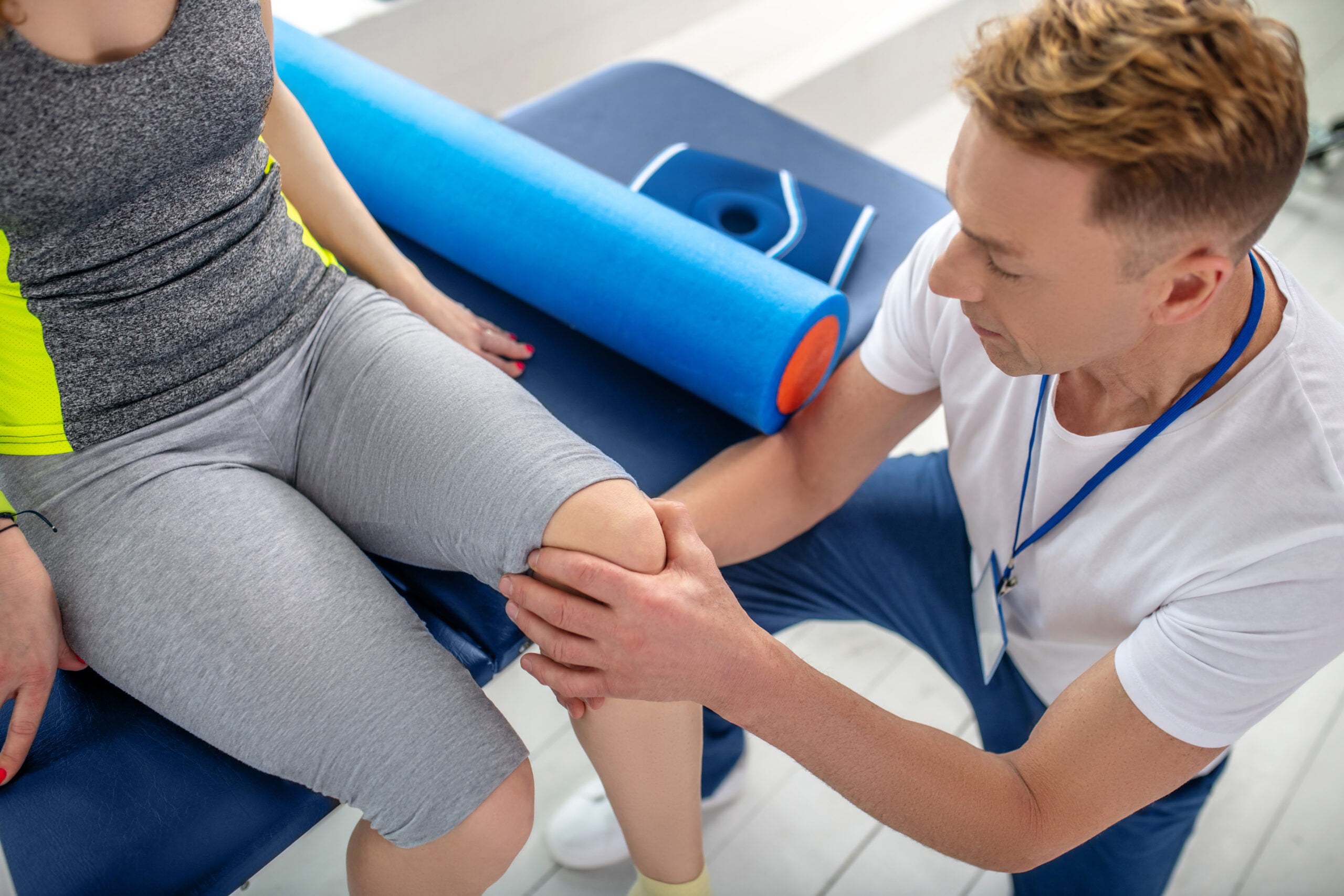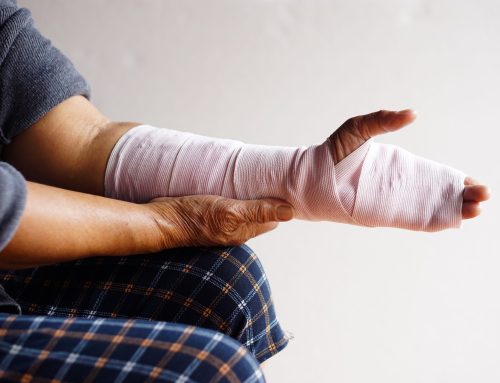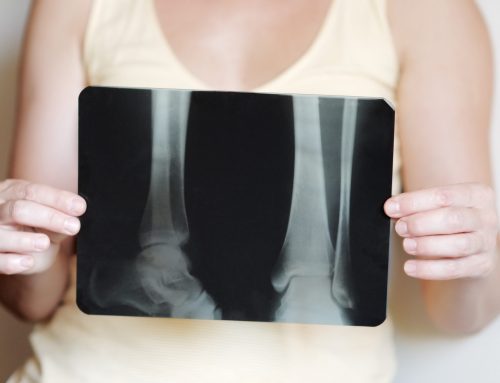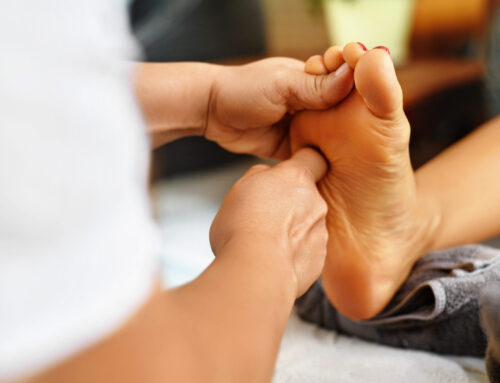In the intricate ecosystem of our body, bones play a vital role, acting as the structural framework while also protecting organs and anchoring muscles. But like any foundation, it can become vulnerable over time, especially if not cared for properly. While a healthy diet and exercise can build stronger bones that are more fracture-resistant, they can still take place and require rehabilitation to return to pre-injury living.
But what can you do to prevent lifestyle-altering fractures? Read on to learn more about how physical therapy can help build strong bones and muscles, helping you combat the risk of a future fracture.

The Role of Bones and Muscles in Our Body
Various factors, including traumatic injuries, medical conditions, and lifestyle habits, can cause bone fractures and impact the bone healing process. Some of the most common causes of bone fractures include:
Every move we make, from getting out of bed in the morning to reaching for that coffee cup, involves the intricate coordination of our bones and muscles. This symbiotic relationship keeps our bodies upright, mobile, and active. But what happens when this dynamic duo faces challenges such as wear and tear or even injuries?
Incorporating stretching into your exercise routine is crucial to help your body get used to these intricate movements rather than focusing purely on strength. Taking this a step further with guided help in physical therapy will keep your body in tip-top shape.
Why Physical Therapy is Integral for Bone and Muscle Health
Physical therapy isn't just for recovery post-injury; it's essential in strengthening and safeguarding our musculoskeletal system, playing a preventive role in preventing potential fractures.
Understanding Muscle Dynamics: Our muscles are like elastic bands. Too much tension or too little use, and they can either strain or atrophy. Physical therapy educates individuals on the right balance of exertion and relaxation, ensuring muscle health.
Targeted Bone Strengthening: Specific exercises can target areas where bones are more vulnerable. Weight-bearing activities, for example, can stimulate bone-forming cells, boosting bone density.
Customized Regimens for Unique Needs: Every body is different. A trained physical therapist can curate routines tailored to an individual's specific requirements, optimizing the potential for strength and resilience.
The Protective Power of Physical Therapy
After understanding the foundational significance of bones and muscles and how physical therapy fortifies them, it's essential to delve deeper into the protective mechanisms that physical therapy employs. While the techniques and routines play a pivotal role, the broader, holistic approach truly sets physical therapy apart as a guardian against injuries and fractures. Let's explore these protective measures in more detail.
Through various methods, physical therapy acts as a shield against potential injuries and fractures.
Improving Posture and Balance: By enhancing core strength and educating individuals on correct posture, physical therapy can significantly reduce the risk of falls – a primary cause of fractures, especially in older adults.
Enhancing Flexibility: A flexible muscle is less likely to strain. Through stretching exercises and routines, physical therapy ensures muscles are supple, reducing the risk of pulls and tears.
Boosting Stamina and Endurance: By gradually increasing the intensity of exercises, physical therapy helps build stamina, ensuring that muscles can withstand more extended periods of activity without fatigue or injury.
Beyond Physical Exercises: The Role of Education
When we think of physical therapy, our minds often go directly to the exercises, stretches, and routines involved. However, an equally valuable and frequently underestimated aspect of physical therapy is the wealth of knowledge it provides.
Understanding the Body: It's not just about knowing that the knee bone is connected to the thigh bone; it's about appreciating the intricate web of muscles, ligaments, and joints that make every movement possible. Physical therapists delve deep into body mechanics, teaching individuals about the structures within and the best practices to use and care for them. They offer insights on correct posture, alignment, and movements, guiding patients on how to move, lift, and exert themselves most efficiently. This education equips individuals to navigate their daily lives with a heightened awareness, making informed decisions that significantly reduce the risk of injury.
Dietary Guidance: Just as a car needs the correct type of fuel to run efficiently, our bodies require specific nutrients to function optimally. Nutrition plays a pivotal role in bone and muscle health. For instance, calcium is vital for bone density, while proteins aid in muscle repair and growth. But it doesn't stop there. Other nutrients like magnesium, vitamin D, and omega-3 fatty acids all play crucial roles in musculoskeletal health. Physical therapists recognize the symbiotic relationship between diet and physical health. They often collaborate with nutritionists or provide resources themselves to ensure that patients receive comprehensive advice on dietary choices that can bolster their therapy exercises and overall well-being.
Together, these educational components, combined with hands-on physical exercises, create a holistic approach to physical therapy, ensuring that patients are physically and mentally equipped to foster robust bone and muscle health.
Physical therapy is undeniably a game-changer for those looking to bolster their bone and muscle health. But what if, despite all precautions, one does encounter a fracture? That's where advanced medical technologies come into play. Devices like the Melmak LIPUS, offered by Marodyne LiV, utilize non-invasive ultrasound technology to stimulate and expedite bone healing. It's like having an insurance policy for your bones – while physical therapy equips you with prevention, devices like LIPUS ensure rapid recovery if an injury does occur. Together, they represent a comprehensive approach to a future of robust musculoskeletal health.
Contact Marodyne LiV to get faster fracture recovery relief.
Have you ever participated in physical therapy? What would you like to learn from a physical therapist? Share your experience with our readers in the comments below.






Leave A Comment